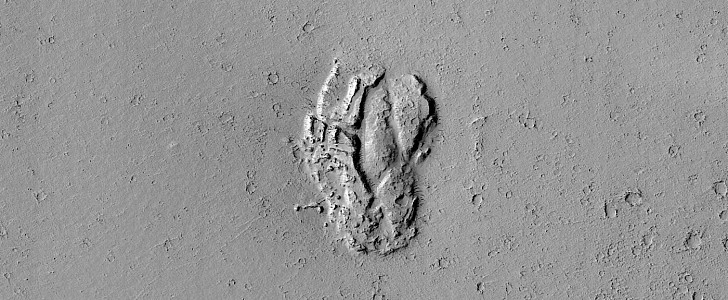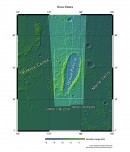You may be wondering why, for some time now, we’ve started showing you glimpses of Mars, captured on camera by the various pieces of hardware humanity has in place on or around the alien world. The answer is simple: we may be going there, possibly even during our lifetime, and we might as well start to know the place a little better.
Mars has always been a subject of dreams for humans here on Earth, but we are now closer than ever to actually going there. The (still) recently announced Artemis Moon exploration program is the first major step to that amazing voyage, as it is not a goal in itself, but just a step to reaching this big, red target in the not-so-distant future.
So yes, we timidly started a while back our Get to Know Mars section, where stuff like this thing here will be featured.
And this thing here is a dome-shaped outcrop in the Orcus Patera region of the planet, a tiny elliptical depression measuring 380 km (240 miles) long and 140 km (87 miles) wide. The depression’s rim rises 1.8 km (1.11 miles) above the plains around it, and the depression itself is up to 600 meters (1,968 feet) below its surroundings.
The outcrop's origins are not entirely known, and it could have been formed as a result of either volcanic or tectonic processes. As for the crater, scientists do not rule it might have at one point been a round impact crater, deformed by compressional forces.
But most people place their money on the Orcus Patera being the result of an oblique impact, “perhaps less than five degrees from the horizontal,” according to the European Space Agency.
The main pic of this piece shows one of the most recent images of the region, taken from an altitude of 278 km (173 miles) by the HiRISE camera fitted on the Mars Reconnaissance Orbiter (MRO) back in September 2015, and recently republished by NASA and the University of Arizona.
So yes, we timidly started a while back our Get to Know Mars section, where stuff like this thing here will be featured.
And this thing here is a dome-shaped outcrop in the Orcus Patera region of the planet, a tiny elliptical depression measuring 380 km (240 miles) long and 140 km (87 miles) wide. The depression’s rim rises 1.8 km (1.11 miles) above the plains around it, and the depression itself is up to 600 meters (1,968 feet) below its surroundings.
The outcrop's origins are not entirely known, and it could have been formed as a result of either volcanic or tectonic processes. As for the crater, scientists do not rule it might have at one point been a round impact crater, deformed by compressional forces.
But most people place their money on the Orcus Patera being the result of an oblique impact, “perhaps less than five degrees from the horizontal,” according to the European Space Agency.
The main pic of this piece shows one of the most recent images of the region, taken from an altitude of 278 km (173 miles) by the HiRISE camera fitted on the Mars Reconnaissance Orbiter (MRO) back in September 2015, and recently republished by NASA and the University of Arizona.







